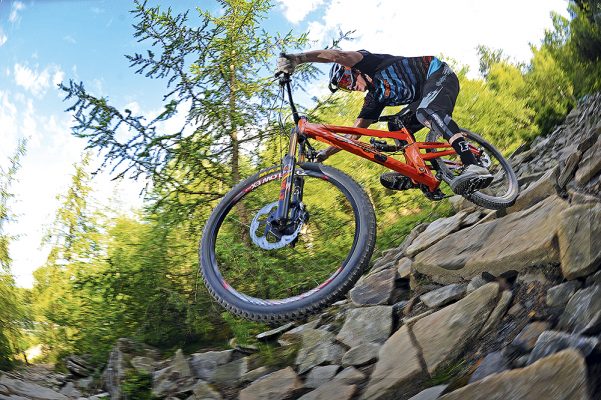29in might be stealing the headlines - and the sales - but 27.5in won't be disappearing anytime soon. Or shouldn't be anyway...
Six reasons why 27.5in wheels still deserve space in your garage. Even if it may only be as a rear wheel… Oh dear, did someone say mullets are the future?
Read more: Mullet bikes – just when you thought the wheel size war was over!
Smaller is lighter
Bigger wheels need more material — whether aluminium or carbon — in the rims, hence more weight. But that’s just the start, those rims need longer spokes, the wheel needs bigger tyres and the whole thing needs a bigger frame to fit into without messing up the geometry. It all adds up. It is much, much easier to build up a capable 27.5in bike that stays below 30lb mark. Whereas, as a lot of you will testify, it’s nigh on impossible to build up an affordable and/or capable 29er that weights less than 35lb. It’s the worst place for the weight too: the rotating bits of the bike and the unsprung mass, hurting acceleration and suspension performance.
Bum buzz
Skid marks. Even the tallest of riders can get buzzed on their bum by the rear tyre on 29ers when on steep terrain. For riders well under 6ft the issue is even more pronounced. Remember Loic Bruni and Danny Hart carrying tread marks on the back of their pants during 2019 World Cup race season? They are two of the more famous riders who subsequently went mullet (29 front, 27.5 rear).
Short riders
In general terms too, riders nearer to 5ft are often at something of a dynamic loss on 29ers. Short riders have difficulty un-weighting the wheels on 29ers. Whilst this can be often be seen as a benefit – super stability – it also prevents shorter riders from ever accessing the more funner aspects of bike riding, namely manualing, pumping and drifting and so on.
Less to flex
Smaller wheels are stiffer than bigger 29er wheels. So anybody who’s a fan of fast cornering, acceleration, precise steering and flicking their bike round tight corners should also be a fan of the 27.5in wheel.
Fast track
Big wheels are faster on many trails, but we still think there are tracks where 27.5in bikes work better. Whoops; there are now worms everywhere, and one big empty can. This is a controversial topic, subjective even and hard to prove. Even if you don’t hold with the common argument that very tight, twisty tracks can be faster on 27.5in as they don’t require as much lean to turn the bike, there is definitely something to be said about the physics of smaller wheels and generating speed from/off trail features. In other words, 27.5in wheels generate more speed from the backside of trail features, and in tighter turns, compared to larger 29in wheels.
It’s not about the bike anyway…
If going down a hill as fast as possible was the ultimate goal in mountain biking we’d all be riding fire roads. Riding is about the feel of speed, something you get from a good 27.5in bike, a good 29er and a good 26in (remember them?) bike alike.
Bike fit
27.5in wheel bikes fit in our cars, vans, houses and uplifts so much more easily.




